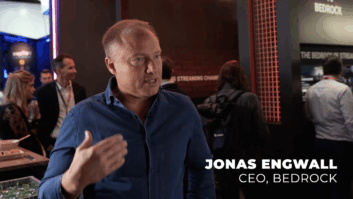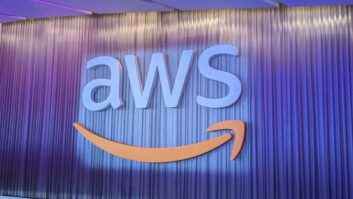From Britbox UK to French streaming service Salto, attempts by European broadcasters to work together and take on the global streaming giants have pretty much fallen flat.
But why is that? And, how can broadcasters stop the big streamers from gaining market dominance? TVBEurope spoke to Ampere Analysis’ Neil Andreson to answer those questions and more.
Over the last few years we’ve seen the likes of Britbox UK and Salto attempt to take on the big streamers before either being rolled into another service or closed completely – why do you think that is?
With international companies like Netflix and Amazon dominating the VoD space, broadcasters are playing catch up. This is largely a result of a decade worth of half-hearted attempts by broadcasters to shape the European SVoD market, leaving the door wide open for global streamers to amass massive market share. Netflix, Amazon and Disney Plus collectively accounted for roughly 70 per cent of the European SVoD market in 2022, with the offerings of national broadcasters lacking the scale to compete with SVoD giants.
From launch, both Britbox UK and Salto failed to emerge as serious competitors and similar joint streaming ventures in Spain and Germany haven’t exactly broken the mould. These streaming alliances have often been marked by various issues: a lack of total commitment from their backers; differing strategic priorities of broadcasters; and the thorny issue of content exclusivity.
Combined services have been seen to be deprioritised by their owners, who are focused more on their individual streaming efforts. While the demise of Salto was triggered by the failed merger of TF1 and M4, Salto’s appeal had already been undermined by its backers, with French broadcasters launching subscription versions of their existing BVoD platforms.
These services have seen limited investment in original content, a cornerstone of streaming success, with broadcasters preferring to focus investment on their own services. Additionally, the limited growth market makes it hard to justify the sort of investment needed to seriously compete with the multi-billion content budgets of global streamers
The reality is that it’s likely too late for any new homegrown ventures to take direct aim at Netflix, Amazon or Disney Plus. After waiting so long to mount a reasonable challenge, any domestic partnerships will likely be considered expendable services by consumers that are increasingly wedded to the deep catalogues of global streaming services.
Additionally, European audiences have come to expect free access to high-quality local content from BVoD platforms as part of their content consumption mix, making it difficult for consumers to see the benefits of a paid-subscription to a cross-broadcaster platform
Some broadcasters have tried to merge operations with others (RTL Netherlands, Talpa) only for them to fail to meet regulatory approval. How can they meet those requirements?
RTL Group has been dealt a double blow after the collapse of the planned merger of French network M6 with TF1, and the decision by Dutch authorities to block the proposed merger of RTL Nederland and Talpa Network. These recent developments have tested the ability of regulators to understand the speed and extent of changes in the global media landscape and the pressures on European broadcasters In both cases, regulatory concerns largely relate to the significant television advertising market share that new entities would potentially command. The remedies needed for the TF1-M6 merger would have included the divestment of one of their main TV channels, undermining the strategic rationale for the merger.
This approach to regulating media mergers, largely based on free-to-air TV advertising market shares, fails to reflect the growing online ad market, the rise of global streamers, and the declining audience share of traditional TV players. However, regulators are right to be cautious of concentrated media ownership in broadcasting, with linear TV still commanding huge audiences in Europe.
The successful merger of TF1 and M6 could have paved the way for a wave of broadcaster mergers across Europe, however these regulatory issues will likely stifle any immediate developments in M&A activity. The growing pressure for consolidation may be difficult for regulators to contain, as they balance concerns around market concentration with the desire to secure the long-term future of local media
Is market consolidation the way forward? If not, how can broadcasters take on the challenge of the global streamers?
In recent years, M&A activity in the global media industry has been heating up – the recent Warner Bros Discovery merger is just one example. Despite regulatory hurdles, large European broadcasting groups will continue to seriously consider consolidation as an appropriate response to the challenges posed by global streamers.
While national mergers may not yet be acceptable to regulators, MediaForEurope sees pan-European consolidation as the answer to these challenges. On completion of its merger of Spanish and Italian operations, MediaForEurope will have total control of its Spanish and Italian operations as well as being the main shareholder of German broadcaster ProSiebenSat.1. This strategy follows in the footsteps of Sky, Viaplay, RTL and Canal Plus in pursuing a multi-country footprint
Opportunities remain for European broadcasters to build a more ambitious cross-border strategy, leveraging the growing international appetite for non-English language content. However the jury remains out on whether a pan-regional strategy makes commercial sense with synergies largely limited to advertising and platform technology
The real opportunities for synergies belong to national mergers rather than pan-regional strategies. Creating larger national broadcast groups with the scale to operate significantly more compelling online platforms remains a powerful answer to challenges posed by streamers. This could be key in securing the long-term prominence of broadcasters and protecting their role in setting the popular cultural agenda. Although consolidation comes with its benefits, it’s not necessarily the only or the best way forward for broadcasters. Pushing faster and harder into developing new income streams, such as a studio business, and placing their own VoD offerings at the heart of their operations is essential
Where do you think the industry will be in 5/10 years? Will traditional broadcasters still be operating in the way they are now? Could the streamers gain market dominance?
From a consumer perspective, traditional TV and non-linear content offerings will continue to coexist beyond the next 10 years. While SVoD access will become mainstream across demographics, at the same time linear TV will still have an important role. Live content such as sports and major events will preserve the high importance of traditional linear TV and carve a more specialised role for broadcasters.
Broadcasters will continue to remain a relevant part of the TV landscape but they will need to up their digital game and boost content budgets to avoid being pushed to the fringes by global players. Leaning into consumer demand for fresh locally-produced content and centring this content on a strong VoD offering will be key to digital transformation.
Strategic mergers, acquisitions and alliances are likely to be more commonplace with local players strengthening their content quality and distribution capability. It is less clear as to how far policy makers and regulators are willing to go to support broadcasters to compete with the financial muscle of large global platforms.
Streamers are gaining ground in Europe but they are some distance away from market dominance within the wider European TV sector. In fact, streamers face a whole host of challenges of their own: subscriber fatigue, rising costs, unwelcome price hikes, and competition from a range of new entrants. Global SVoDs are already making ambitious moves though, and we’re likely to see this develop further. Beyond serving as a platform for scripted TV shows and movies, streamers will target core broadcast groups with a more generalised content offering with cross-demographic appeal.
What would be your advice for a broadcaster looking to take on the global tech companies? Should they focus on content, user experience, or technology?
Ultimately, European broadcasters need to be flexible and adaptable in responding to the challenge of global streamers. National broadcasters can leverage their local expertise and cultural knowledge to create content that resonates with local audiences and lean on data and analytics to tailor programming to viewers’ preferences.
They will need to direct resources to free ad-funded streaming platforms and invest heavily in exclusive digital-first content. Additionally, local players must be open to cooperation and alliances, even with their direct competitors, to maintain relevance in the digital age.







